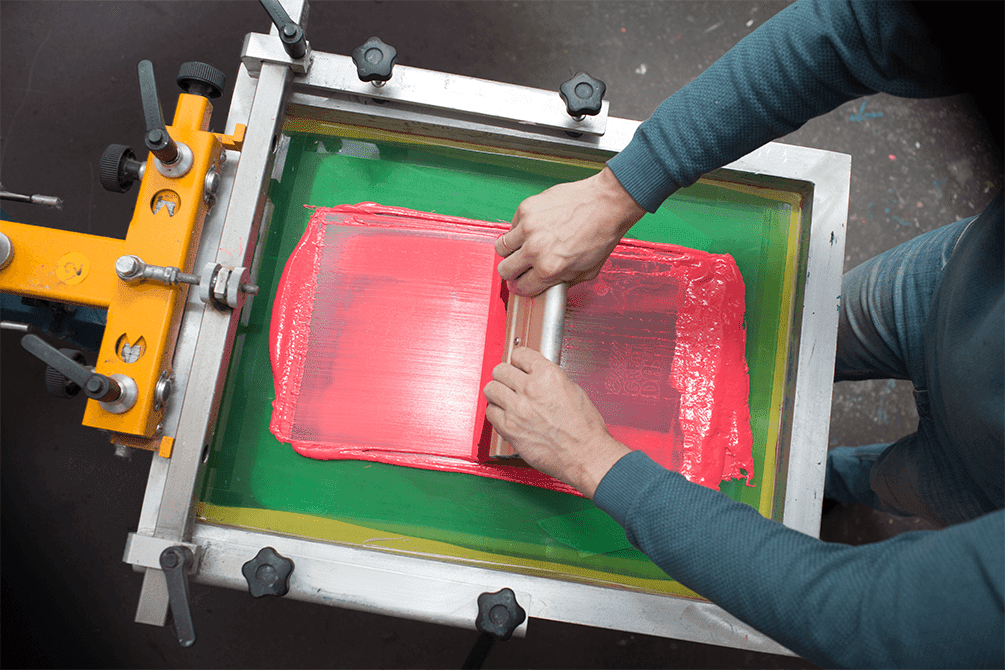To start any type of business, firstly, you require two things:
- Your gut feeling
- Deep market research
If you have decided upon starting an online photo book business, then start by studying the industry. It will help you draft a well-equipped business model with its future scope, opportunities, threats, and upcoming trends.
Online Photo Printing industry is experiencing notable innovations. From old school photo negatives to HD photographs, people never stopped capturing their precious moments. A study by Market Research Future states that global photo printing market was valued at $13,125.4 Million in 2017. It is expected to reach $26,113 million valuations by 2023.
Building a business in such a growing industry comes with a range of benefits:
- Influence of tourism and event sectors is boosting the growth of Online Photo Printing.
- You can start with a low-risk option of Print on demand for better margins.
- In 2018, more than 1 trillion digital photos were taken. After removing unnecessary pictures, even if you get to cater ¼ th of the users, it can be extremely profitable for you.
- You can make the right use of customers’ creativity by offering them personalized photo albums and books.
To join the bandwagon here’s all that you will need to do:
- Create a well-researched business idea
- Choose your product
- Pick your Supplier Wisely
- Choose an eCommerce platform
- Product Designer Tool – The Unique Factor
- Printing Method
- Operations & Infrastructure
- Launch and Market
1. Create A Well-Researched Business Idea
After deciding to start a business, people jump into creating a website, adding photo books (their products), market it, and then wait for the sales. But on the contrary, as I stated in the beginning, start with planning.
Here’s what a well-researched business plan should include:
Market Analysis:
Before jumping into any business, it is important to study the market thoroughly.
- Study the market leaders and their product offerings. Are they concentrated on a single product or do their flagship products cover a whole range of products?
- After the product research comes the cost. You might end up finding a product which is available online for $500, but its cost is only $50. Dig further, find out who are their vendors and suppliers?
- Study the market size, industry growth rate, trends, profitability rate, etc. All these things combined will lay a solid foundation for your business.
Other decisions and research included in Market Analysis:
Identification of Customer Base:
Customers are at the core of any business. It is important to define your targeted audience to have clarity on the products, sales funnel, digital presence, user-interface of website, and more.
- Determine whether you will be selling it to wholesalers, end customers, or both.
- What will be the demographics of your customers?
- Which needs of your customers will you be fulfilling?
Don’t forget the Competition
Not to copy what your competitors are up to. But to make sure that you are not missing out on what is trending currently in the market. From their website, products, marketing, social presence everything should be a part of your research to design a plan for your own business.
Make your Financial Strategy:
To deliver quality results, you will need better resources. And that leads to business investment. But, without panicking about it, here is how you can manage it:
- Anticipated + run-time expenses
- Funds for the investments
- Records of monthly, quarterly, and yearly turnover.
- Monthly Loss, profit margins
- Monthly product return margins
- Annual growth margins
The Infrastructure
After the research comes the decision making. Once you know the market, it’s time to decide the infrastructure. Will it be completely online or offline? Or do you want to go with the hybrid plan? While making this decision, here is what you need to consider:
- Offline Business:
– You will require a bigger budget to rent/buy a physical space.
– Insurance
– Lease negotiations
– Common area maintenance
- Online Business:
– Relatively lower budget to buy the online space.
– Set up a website, and good to go!
Launch your online photo book store within 48 hours with our web-to-print store. It is a full package that comes with a great looking website with a designer tool as an added USP! To know more, schedule your consultation.
2. Choose Your Products
While deciding on products to sell, it is important to consider products which are trending and widely preferred by the customers. But picking only those products which are currently in trend will also lead you nowhere. Your decision of choosing the product should be based on market price, cost, profit margins, availability, storage requirements, market demand, popularity.
For an online photo book printing business, there are three main types:
- Your Own: You find an external resource and develop your own platform exclusive for the store. Choosing this option can be helpful when you have a business with a niche market and you have a specific set of requirements.
- Traditional Platforms: These include Kentico, Hybris, IBM digital commerce and such platforms. You can purchase a license by paying a fee upfront. Which you will have to renew it annually., Your IT team will customize this platform according to your business logic and install either on-premise or cloud-based.
- Open Source platforms: The development procedure is similar to traditional platforms. But you will not have to pay the upfront license costs. You still need to pay charges for implementation, ongoing development, customization, etc. The best among open-source platforms is Magento.
- Cloud Platforms: Cloud platforms means traditional open-source platforms upgraded with a hosting system. It includes Magento enterprise cloud, Demandware, Salesforce Commerce, and Volusion.
- SaaS Platforms: SaaS platforms are hosted and built with a single code base. You will have to pay a fixed monthly fee that covers server use, maintenance, security, and upgrades.
- Hidden costs: Maintenance costs, New features or improvements, Upgrades, UX changes.
- Support: Effective support for an eCommerce platform is crucial as it plays a major role in lead generation.
- Mobile Friendliness: We have read more than enough articles online on how important it is to have a mobile-friendly store. Assure you have this necessity fulfilled.
- SEO Friendliness: Your presence on Google vital when operating an online business. Make sure your platform supports it.
- Security Updates: Your e-store will have regular monetary transactions. Hence, it is important that your platform has regular security upgrades.
- Pre-defined templates, clipart, images, text, fonts, libraries.
- Should provide options for visual effects, filters, masking effects, and more.
- Preview of each and every side.
- They should be able to save their design and edit it whenever they want to.
- SEO friendly.
- Do I want to offer all the e-store products in customizations?
- Which areas of the products will be design areas?
- On how many sides customers can design?
- Do I need to provide 2D or 3D preview?
- Are the current features on the tools enough to provide an ultimate experience?
- Sending out for print: Going for the print-on-demand business model, you can find an appropriate printer. Make sure that they are well-equipped and can provide fine-edge prints to you.
- Setting up your infrastructure: If you already have a Printing business set up, then you can invest in upgrading offices, hiring professionals, latest equipment, etc.
- Optimize the website content for SEO and Google rankings.
- Start blogging. Write How-to Guides.
- Make YouTube videos or vlogs (less capital intensive).
- Start with paid ads marketing (if you have a surplus budget on hand).
- Make referral programs.
- Influencer marketing
- Social Media Presence
- Offline Marketing
Flipbook: A soft, magazine type book.

Hardcover Photo Book: It has two different cover types. Linen and printed cover.

Layflat Photo Book: Here, each page opens completely flat allowing for full-page layouts.

Along with the type of photo Books, choose the types of paper you would want to offer:
Matte: These are non-glossy pages.

Glossy: Glossy prints give your page a soft and shiner touch.

Linen: These pages contain embossed texture with a crosshatch pattern that is reminiscent of a fine linen tablecloth.

Pearl: A pearl-like finish with a bit of shine.

3. Pick your Supplier Wisely
After you can visualize the final product, it’s time to set up the operations. Select a supplier who is consistent with quality finished products. Because you also don’t want to end up having a shortage of products or with bad quality while actually getting a good number of orders.
You will need a lot of detailed products including, photo book pages, covers, spiral, recyclable material (if you are an environment enthusiast), and whatnot. I personally prefer Alibaba for all your needs. They offer competitive market rates and sources. There are other resources like India mart, Made in China and like.
4. Choose an eCommerce Platform
Your ecommerce platform is the most prominent aspect of your business. It is not a simple decision to make. Just like running a retail store, you need to apply the same level of strategic thinking and planning before starting your eCommerce journey.
The first decision here will be choosing an eCommerce platform. We’ve listed major platforms:
Building a website from scratch demands a lot of details. You need to make sure you use the right features that fulfill your customers’ requirements. Let us help you choose the right platform with a product designer tool as an added USP. To know more, schedule your consultation today.
How to Pick the Right One?
While deciding the one that suits your needs, keep below factors in mind:
5. Product Designer Tool – The Unique Factor
It is always a good idea to adopt market trends to be consistent & relevant in the market. And customized products are making the headlines in the market currently.
Photo Album Product designer tool integrates with your e-store and lets customers design and craft their own photo albums. You can make your online store stand out by integrating this tool.
You can buy a web-to-print tool and integrate with your ecommerce store from several vendors. If you have issues during configuration, some companies also provide services by setting up an entire store.
Here are some essential features to look for:
And before installing this tool, here’s what you need to ask yourself:
Looking to choose the right product designer for your business? Team Brush Your Ideas offer product designer that let your customers create products in minutes. To see how it works, request a personalized demo.
6. Printing Method
All the efforts would pay off once you have the final printed product. Therefore, it is important to choose a printing method which delivers the outputs just the way you have imagined. We recommend you to go with Digital printing as opposed to screen, flexography, and the like.
Digital Printing:
An ideal method for Photo books printing. Here the digital images are reproduced on papers. You can use as many color combinations you wish using a web to print software. It is important to keep the resolution of image 300dpi for high-quality prints.
7. Operations & Infrastructure
For printing:
Here’s how to go:
For Logistics:
How you manage your delivery commitments play a major role behind creating an image of your brand. During the initial days, you can manage product deliveries on your own. But once you start getting consistent orders, collaborate with a delivery company who can take care of your orders.
8. Launch and Market
After all this hustle and bustle, it’s time to launch. I would suggest that prior to launch, start marketing about the launch. This way, people will get to know about it which will create some curiosity.
After the launch, don’t forget the marketing budget. It’s crucial to market your product the right way.
Here’s how to get started.
There are a plethora of marketing channels available but you should choose the one keeping your customer base in mind.
That’s all from our end.
What’s your Plan?
We have tried to cover almost all the things you will be needing to make your store a success story.
And everything kept aside, the bottom line is to keep trying and providing your customers with what they deserve for the price you ask. Having served the industry for 10+ years we can help you launch your photobook business quickly with all the required features. With a portfolio 70+ counties around the globe, let us help you step into the world of customization with the right tool. To know more, schedule your consultation.
All product and company names are trademarks™, registered® or copyright© trademarks of their respective holders. Use of them does not imply any affiliation with or endorsement by them.








Follow with us